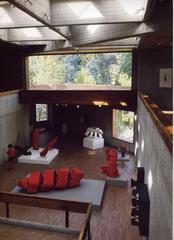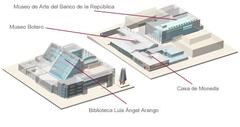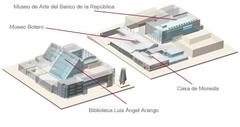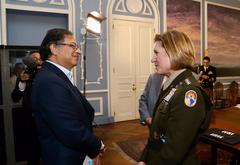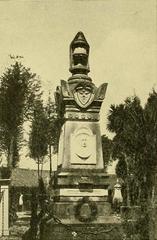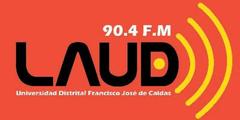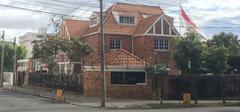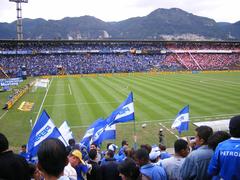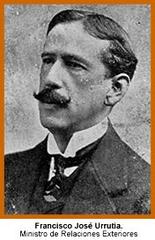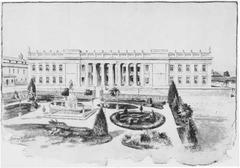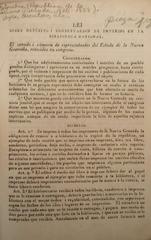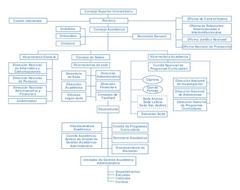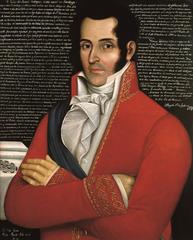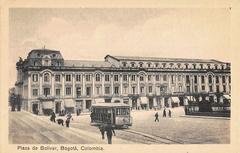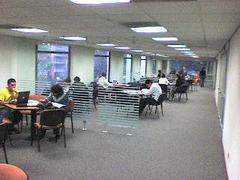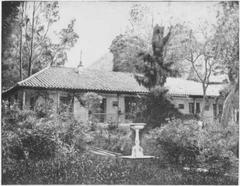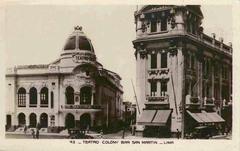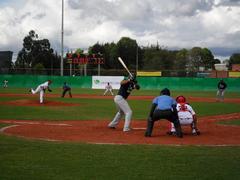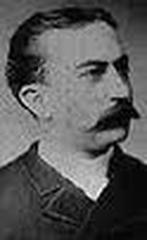Universidad De San Buenaventura Bogotá Visiting Hours, Tickets, and Historical Sites Guide
Date: 04/07/2025
Introduction: Legacy and Significance
Nestled in Colombia’s vibrant capital, the Universidad de San Buenaventura Bogotá stands as a living testament to centuries of academic excellence and Franciscan tradition. Founded in 1708 by the Franciscan Order during the Viceroyalty of New Granada, the university is a dynamic blend of historical heritage and modern innovation (QS China). Its campus, with colonial architecture and symbolic art, invites visitors to explore a unique chapter in Colombia’s educational and spiritual history, while its central location provides convenient access to some of Bogotá’s most significant historical sites (USB Cali About). Whether you are a history enthusiast, a prospective student, or a curious traveler, this guide equips you with everything you need to know about visiting the university and its surrounding cultural landmarks.
Contents
- Historical Overview
- Colonial Origins and Foundations
- Republican Era and Secularization
- Modern Reestablishment
- Academic Structure and Institutional Growth
- Visitor Information
- Hours and Tickets
- Accessibility and Location
- Tours and Events
- Photographic Highlights
- Cultural and Educational Importance
- Notable Alumni and Institutional Milestones
- Nearby Bogotá Historical Sites
- Travel Tips
- Frequently Asked Questions (FAQs)
- Conclusion
- Additional Resources
Historical Overview
Colonial Origins and Foundations
Established as the Colegio Mayor de San Buenaventura in 1708, the institution was recognized by royal decree of King Ferdinand VI, granting it the authority to confer academic degrees and use official symbols that persist today (USB Símbolos Bonaventurianos). Initially focused on philosophy, theology, and the liberal arts, the college became a cornerstone of colonial Bogotá’s intellectual and religious life (QS China).
Republican Era and Secularization
Through the 18th and early 19th centuries, the college adapted to a rapidly changing society, training clergy and lay professionals. In 1861, under President Tomás Cipriano de Mosquera, secularization decrees led to the closure of many religious institutions, including San Buenaventura. The college’s assets were seized, and academic activity was suspended, marking a century-long hiatus (USB Símbolos Bonaventurianos).
Modern Reestablishment
The 1960s saw a remarkable revival led by Fr. Alberto Lopera Trujillo, OFM, who secured governmental recognition for the university by presenting historical documentation. Since then, Universidad de San Buenaventura has flourished, expanding to campuses in cities like Medellín, Cali, Cartagena, Armenia, and Ibagué, with Bogotá as its flagship (QS China).
Academic Structure and Institutional Growth
The university today comprises five faculties: Architecture, Art and Design; Economic Sciences; Law and Political Sciences; Human and Social Sciences; and Engineering. Offering 23 undergraduate degrees and over 40 postgraduate and continuing education options, USB Bogotá serves a diverse student body of over 2,300, supported by more than 600 faculty members (USB Cali About; QS China). The academic mission is guided by Franciscan values, emphasizing holistic development, social responsibility, and research-based innovation.
Visitor Information
Visiting Hours and Tickets
- Hours: Monday to Friday, 8:00 AM – 6:00 PM. Some facilities may have restricted hours during holidays or university events.
- Admission: Free for visitors. Guided tours—offered by appointment—may require advance booking, especially for groups. Some cultural events may have a nominal fee.
Accessibility and Location
Located at Carrera 8H # 172-20 in northern Bogotá (filosofia.net), the campus is easily accessible by public transport, taxi, or private car, and features on-site parking. Facilities include ramps, elevators, and accessible restrooms for visitors with disabilities.
Tours and Events
- Guided Tours: Explore campus history, architecture, and Franciscan symbolism by arranging a guided tour in advance (usb.edu.co).
- Cultural Events: The university regularly hosts literary contests, exhibitions, and music performances, which are often open to the public.
Photographic Highlights
The campus features colonial and contemporary architecture, tranquil gardens, the iconic university seal, and religious iconography. Visitors are welcome to photograph public areas but are encouraged to respect ongoing academic activities and seek permission before photographing classrooms or private events.
Cultural and Educational Importance
As one of Colombia’s oldest educational institutions, Universidad de San Buenaventura is distinguished by its enduring Franciscan spirit and commitment to ethical, humanistic, and scientific education. The university’s seal, which includes the five wounds of St. Francis of Assisi, embodies its global Franciscan identity (USB Símbolos Bonaventurianos). Its hymn, composed by Fray Rubén Darío Vanegas and Fray Bernardo Molina, honors the institution’s spiritual and academic journey.
Notable Alumni and Institutional Milestones
- Fr. Alberto Lopera Trujillo, OFM: Instrumental in the university’s mid-20th-century restoration.
- Royal Decree by King Ferdinand VI: Established the university’s academic authority in colonial times.
- 1861 Exclaustration: Demonstrated institutional resilience during secularization.
- Distinguished Graduates: Alumni have made significant contributions to Colombia’s legal, educational, engineering, and cultural sectors.
Nearby Bogotá Historical Sites
The university’s central location offers visitors the chance to explore other notable landmarks:
- Plaza Bolívar: The city’s main square, surrounded by government buildings and historical monuments.
- Primary Cathedral of Bogotá: A masterpiece of colonial architecture.
- Gold Museum (Museo del Oro): Home to one of the world’s largest collections of pre-Hispanic gold artifacts.
- La Candelaria: Bogotá’s historic district, filled with museums, colonial churches, and vibrant street art.
Travel Tips
- Footwear: Wear comfortable shoes for exploring the campus and nearby sites.
- Event Schedules: Check the official university website or social media for up-to-date event listings and visitor guidelines.
- Photography: Allowed in most public areas; always ask before photographing private spaces.
- Language: While some staff and students speak English, arranging a guide or translator for non-Spanish speakers is recommended.
Frequently Asked Questions (FAQs)
Q: What are the visiting hours for Universidad de San Buenaventura Bogotá?
A: Monday to Friday, 8:00 AM – 6:00 PM. Guided tours require prior booking.
Q: Is there a cost to visit or join a tour?
A: General admission is free; some guided tours or special events may have a nominal fee.
Q: Is the campus accessible for those with disabilities?
A: Yes, all public areas are equipped to accommodate visitors with mobility needs.
Q: How do I arrange a guided tour?
A: Contact the university via their official website to book in advance.
Q: What other attractions are nearby?
A: Plaza Bolívar, Gold Museum, La Candelaria, and other key Bogotá sites.
Conclusion
A visit to Universidad de San Buenaventura Bogotá is an invitation to engage with Colombia’s rich academic, spiritual, and cultural heritage. With its accessible campus, free admission, historical architecture, and proximity to major Bogotá landmarks, the university is a rewarding destination for tourists, scholars, and anyone interested in the story of Colombia’s educational evolution. To optimize your experience, consult the official website for current visiting hours, event announcements, and tour availability.
Additional Resources
- Official Universidad de San Buenaventura Website
- Bogotá Tourism Guide
- Virtual Tour of Universidad de San Buenaventura Bogotá
- Filosofía USB Bogotá Campus Overview
- USB Símbolos Bonaventurianos
- QS China University Profile
- About the University, USB Cali
- 4ICU University Review
Images and maps related to the university’s history, campus, and visitor information are recommended for inclusion, with descriptive alt text for optimal accessibility and SEO (e.g., “Universidad de San Buenaventura Bogotá visiting hours,” “Bogotá historical sites”). Internal links to related articles on Colombian universities and cultural attractions are also suggested.


